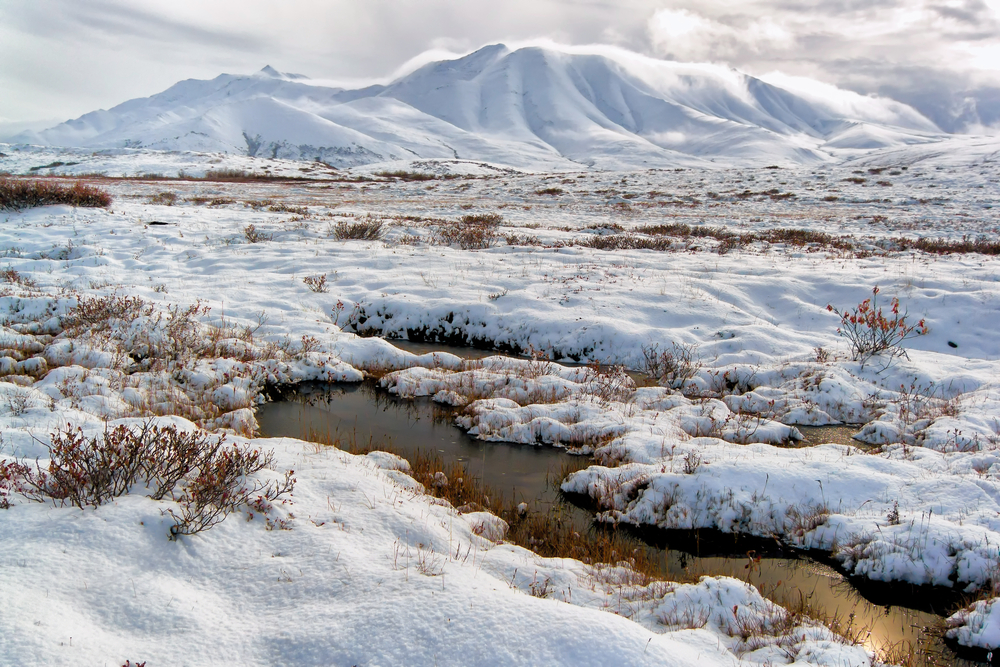
WWW.DISCOVERMAGAZINE.COM
Permafrost Thaw and Wildfires Are Raising CO2 Emissions in Arctic Tundras
Climate change has already begun to instigate environment-altering effects around the world, and the latest evidence is cropping up in arctic regions that are emitting increasing amounts of carbon dioxide. Researchers in a new study published in Nature Climate Change, have measured the flow of carbon in the Arctic-boreal zone (ABZ) consisting of the treeless tundra, boreal forests, and wetlands in northern latitudes and found that a shifting dynamic is underway.These environments were once mostly carbon dioxide sinks, meaning they absorbed more atmospheric CO2 than they released. The majority of the ABZ still acts as a sink, but now, some spots have started to become significant carbon sources.A Change in the Earth's BreathingIn the new study, an international research team led by the Woodwell Climate Research Center assessed a collection of carbon flux data spanning from 1990 to 2020, taken from 200 sites in the ABZ. They found that 34 percent of the ABZ is now a source of carbon to the atmosphere, and this percentage goes up to 40 percent when considering emissions from wildfires.The researchers wanted to know how the constant breathing of the Earth in other words, the cycle of CO2 uptake and release that is largely driven by plant photosynthesis and decomposition has changed in northern latitudes. From 2001 to 2020, the ABZ has generally been increasing as a carbon sink due to increased carbon uptake during summers. This serves the important role of maintaining a balance in the atmospheres CO2 levels.However, more spots in the ABZ especially in tundras are also turning into carbon sources, mainly due to rising emissions during non-summer seasons. Other reasons may include vegetation dieback (the gradual death of plant tissue) and the growing frequency of permafrost thaw. In tundra regions, average annual soil temperatures are trending toward above freezing, leading to a greater incidence of organic decomposition, which contributes CO2 to the atmosphere. In addition, introducing fire emissions further augments the CO2 levels reviewed in the study.While we found many northern ecosystems are still acting as carbon dioxide sinks, source regions and fires are now canceling out much of that net uptake and reversing long-standing trends, said Anna Virkkala, a research scientist at the Permafrost Pathways initiative at Woodwell Climate and lead author of the study, in a statement.Unlike tundras, the somewhat milder boreal forests are more often experiencing strong carbon uptake due to longer summers, offsetting the non-summer emissions. These regions, though, are still seeing the appearance of more carbon sources as well.Read More: Debunking 3 Common Climate Change MythsCarbon Source HotspotsResearchers upscaled the CO2 data, which combined individual site-level readings with climate, soil, and vegetation records to create living maps that showed the fluctuations of atmospheric carbon. The upscaling revealed where this changing dynamic is occurring; the researchers note that it is certain hotspots within the ABZ that are greatly impacting trends in carbon flux.Growing carbon sources have been showing up primarily in northern Europe, Canada, Siberia, and central Alaska. Carbon sources are becoming especially prevalent in tundra and boreal environments in Alaska. The researchers say this may be a result of Alaska having rapidly warming autumns and declining autumn snow cover. Accelerated permafrost thaw in the state has also been observed in recent decades.Keeping an Eye on SiberiaSiberia presents an interesting case, as the regions boreal environments represent some of the strongest net sources and sinks according to data. On the whole, Siberia tundras and boreal forests are experiencing escalating sink trends; this may be influenced by factors like earlier starts to the growing season, increased carbon uptake from declining spring snow cover, and increased tree distribution. Siberia will be a crucial area to watch since it stores more than half of the permafrost regions carbon stocks and is warming quicker than other parts of the ABZ.Although data from the past three decades has shown patterns of both rising sink and source trends, researchers say more data is needed in places like Siberia and the Canadian Arctic. Studying the entire ABZ region, particularly areas where permafrost is melting, will be a pivotal step in the future as climate change intensifies.Carbon cycling in the permafrost region is really starting to change, Virkkala said. Our study may act as a warning sign of bigger changes ahead, and offers a map of places well need to better monitor in the coming decades.Article SourcesOur writers at Discovermagazine.com use peer-reviewed studies and high-quality sources for our articles, and our editors review for scientific accuracy and editorial standards. Review the sources used below for this article:Nature Climate Change. Wildfires offset the increasing but spatially heterogeneous Arcticboreal CO2 uptake UNU EHS. 5 Things You Need to Know About Forest Die-backNational Park Service. Fire in Ecosystems: Arctic TundraJack Knudson is an assistant editor at Discover with a strong interest in environmental science and history. Before joining Discover in 2023, he studied journalism at the Scripps College of Communication at Ohio University and previously interned at Recycling Today magazine.
0 Комментарии
0 Поделились
162 Просмотры


